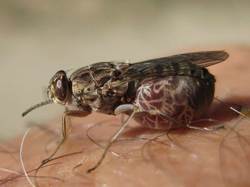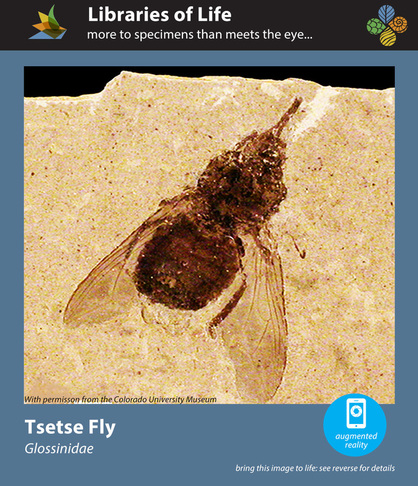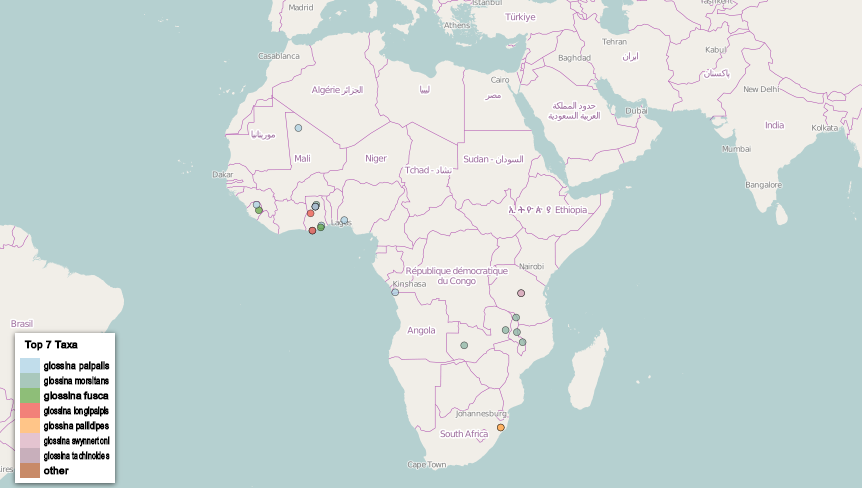Tsetse Fly: Did You Know?

Tsetse flies belong to the genus Glossina, of which there are about 25 currently recognized species. They are one of only a few groups of flies that give birth to live young. Adult tsetse flies are parasites that feed only on blood, which makes them potent disease vectors to mammals (e.g., humans and cattle) for a protozoan called Trypanosoma. Trypanosoma parasitizes mammals and can cause several different kinds of dangerous diseases, including sleeping sickness.
At almost 2 cm in length, this tsetse fly from the Florissant Fossil Beds was much larger than those alive today. It would have been a great nuisance to any mammals living around Florissant lake during the Eocene epoch. Today, tsetse flies are found only in tropical and subtropical Africa and the southern tip of the Arabian Peninsula. Given their absence in South America and the East Indies, tsetse flies were once considered to have evolved in Africa and remained within the continent. However, fossil evidence from the Florissant Fossil Beds in central Colorado has shown that the range of these flies was once much greater. Although Colorado is too cold to support tsetse fly populations today, it was a warmer place during the late Eocene, with a subtropical to warm temperate climate. The presence of the Florissant tsetse flies serves as evidence of both a warmer climate in North America during the Eocene and as a reminder that fossils can provide important information about the evolutionary history of modern organisms. Because of the great impact of insects on human society—both negative and positive—it is vital to understand how insect populations respond to environmental changes. Insect fossils can help provide insights on these changes by linking the past to the future. The Fossil Insect Collaborative is currently working to make all major collections of these fossils digitally available to aid in research, education, and other endeavors by use of digitization and development of interactive media. Credits:
Project's Library of Life Leads: Talia Karim, University of Colorado Boulder's Museum of Natural History, PI Dena Smith 3D Imaging: Anne Basham Card Image: University of Colorado Boulder's Museum of Natural History Page Image: Glossina spp., David Bygott More information: Fossil Insect Collaborative http://fossilinsects.colorado.edu/ Digitized Glossina specimens in biological collections.
Click the map to explore the iDigBio database. |




